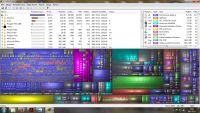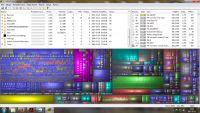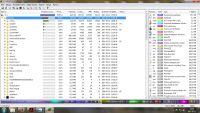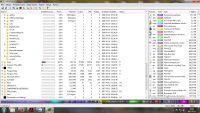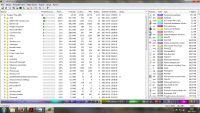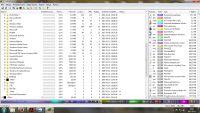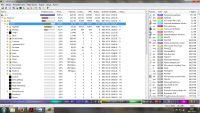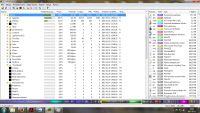FAQ
TL;DR: Freeing 8-13 GB (15-24 % of a 55 GB system partition) is typical after deleting TEMP, SoftwareDistribution and hibernation files. "55 GB on the system partition is such a minimum" [Elektroda, Kasek21, post #16472021] Run Disk Cleanup, disable hiberfile, then audit with WinDirStat.
Why it matters: More than 10 % free space keeps Windows Updates, paging and defragmentation working without slow-downs.
Quick Facts
• Hibernation file = installed RAM (4 GB shown) [Microsoft Docs, 2023].
• Pagefile guideline: 1–1.5 × RAM; min 1 GB [Microsoft Docs, 2023].
• System Restore can use up to 5 % of drive by default [Microsoft Support, 2021].
• Windows 7 clean install: approx. 18–20 GB footprint [Microsoft Docs, 2020].
• Windows Update needs at least 2 GB (≈5 %) free to complete successfully [Microsoft Support, 2022].
Which Windows 7 folders are safe to clear for quick space gains?
Delete Recycle Bin, C:\Windows\SoftwareDistribution\Download, C:\Users\\AppData\Local\Temp, browser caches and old restore points. These held over 8 GB in the thread example [Elektroda, alik321, post #16471909] Always close running apps first.
How do I disable or re-enable hibernation?
Open Command Prompt as Administrator.
- powercfg.exe /hibernate off – removes hiberfil.sys (saves RAM size of space).
- powercfg.exe /hibernate on – restores it when needed [Elektroda, alik321, post #16471504]
What paging-file size suits 4 GB RAM?
Set both initial and maximum size to 2048 MB to halve disk usage yet keep stability [Elektroda, Kasek21, post #16471584] Microsoft recommends at least 1 GB or RAM size whichever is larger [Microsoft Docs, 2023].
Is it safe to empty C:\Windows\SoftwareDistribution\Download?
Yes. The folder only stores downloaded update packages; Windows rebuilds it after the next scan [Microsoft Support, 2022]. Stop the Windows Update service first for stubborn files.
Can I wipe everything in the Temp folders?
Yes. Items in %TEMP% and AppData\Local\Temp are disposable once applications close [Elektroda, maxmario, post #16472017] Skip files that report “in use.”
How do I shrink space used by System Restore?
Control Panel → System → System Protection → Configure. Move the slider to 2–3 GB (≈4–6 % of 55 GB). Keep at least one restore point for safety [Microsoft Support, 2021].
Should I delete old Windows Backup or system-image files?
Use Control Panel → Backup and Restore → Manage space. Remove failed images like the 568 MB orphan shown in the thread [Elektroda, alik321, post #16472169] Deleting files manually can corrupt catalog data.
Are .cab or .zip caches under ProgramData safe to remove?
Only delete them if you uninstall the related software. The Adobe and Visual C++ cab files listed store installer data; removing them breaks repair/uninstall options [Adobe KB, 2022].
How can I tell if my C: drive is SSD or HDD?
Press Win+R → dfrgui. The Optimise Drives window labels media type as “Solid-state drive” or “Hard disk” [Microsoft Docs, 2020]. Disabling defrag on SSDs prevents unnecessary writes.
What happens if Windows runs out of virtual memory after you shrink the pagefile?
Programs may crash with “Out of memory” errors. Re-enable “System managed size” or raise the pagefile to 1.5 × RAM immediately [Microsoft Docs, 2023].
3-step: Find space hogs with WinDirStat
- Run WinDirStat as Administrator.
- Select C: and wait for the treemap.
- Right-click largest blocks → Explore here → decide to delete or move [Elektroda, Matuzalem, post #16471619]
What free-space level keeps Windows 7 healthy?
Maintain at least 10 % free. Below 5 %, Windows Update and defragmenter can fail [Microsoft Support, 2022]. The user’s system stabilised once free space rose from 4 GB to 13 GB (24 %) [Elektroda, alik321, post #16472113]
Edge case: Does disabling hibernation break anything?
Hibernation controls Fast Startup on newer hardware and hybrid sleep. Laptops lose the ability to save battery-critical state when off [Microsoft Docs, 2023]. Re-enable before lengthy battery use.
How do I move Documents or Desktop to another drive?
Right-click the library → Properties → Location → Move… Select D:\. Windows updates shortcuts automatically [Download.net tutorial, 2014].
Are third-party cleaners like CCleaner or PrivaZer safe?
CCleaner’s standard scan is generally safe but has caused registry issues in rare cases [Avast Advisory, 2022]. PrivaZer offers deeper cleaning; back up or create a restore point first [Elektroda, pidar, post #16476130]



